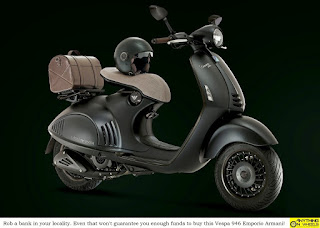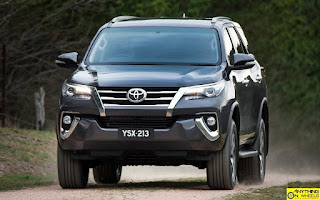Alfa Romeo has been making cars for more than 100 years but they have never made a Sport Utility Vehicle (SUV) so far. At a time when demand for SUVs and crossovers are sky-rocketing, no automotive brand can afford to not have one in their lineup. Being late to the party as they are, Alfa Romeo unveiled it's first-ever SUV, the Stelvio, at the recently concluded 2016 Los Angeles Auto Show.
Named after the highest mountain pass in Italy, the Stelvio is all set to join the Giulia that debuted in 2015 marking the beginning of a new era for the Fiat-owned Italian luxury brand. Just like the Giulia, the Stelvio aims to offer Alfa Romeo's signature Italian flair and sporty handling in the booming SUV crossover segment, a combination that not many brands successfully manage to deliver.
SUVs aren't always pretty but the Stelvio, unveiled in Quadrifoglio version in Los Angeles, surely is. The brand's trademark shield-shaped grille with apertures around it and the big air dams hint at power and aggression as do the functional air vents in the hood. Alfa Romeos have always vowed us with their impeccable surfacing and the Stelvio is no different - just look at the interplay of surfaces in the hood, bumper and the fenders! The racy profile has flared wheel arches and two prominent character lines to show off. Don't miss the cloverleaf 'Quadrifoglio' logo and the gorgeous alloy wheels! The rear, though, is more station wagon than SUV but, with a contoured trunk lid, diffuser and quad-exhausts topped off by a beautiful spoiler, we aren't complaining.
The driver-centric cabin is simple yet elegant. The steering wheel is beautifully shaped and textures and has a plethora of controls including the push button start. That, and the angled dashboard with the diagonal central tunnel, puts a lot of focus on the driver and the driving position. While this Quadrifoglio version has a 8.8-inch touchscreen multimedia in the dashboard, the standard Stelvias get a 6.5-inch display.
Powering the Stelvio Quadrifoglio is a 2.9-liter BiTurbo petrol engine shared with the Giulia Quadrifoglio. Mated to a ZF-sourced 8-speed automatic transmission, this engine generates 510 horsepower, enough to accelerate from 0 to 100 km/h in just 3.9 seconds. All other variants of the Stelvio get a 2.0-liter 4-cylinder turbo petrol, also shared with the Giulia, that churns out 280 horsepower.
Stelvia's all-wheel drive hardware includes an active transfer case and front differential combined with Alfa Romeo's Torque Vectoring system, all of which are controlled by a Chassis Domain Control system. A double wishbone front suspension, Alfa Romeo's patented 'AlfaLink' multilink rear suspension, the new DNA Pro selector - offering Dynamic, Natural, Advanced Efficiency and Race modes and a perfect 50:50 weight distribution mean the Stelvio Quadrifoglio has all the characteristics to make us grin ear to ear when we are behind the wheel.
The Stelvio is slated to go on sale in 2018. With the Giulia getting rave reviews wherever it goes, we are sure the Stelvio wouldn't be far behind. Good times are ahead of Alfa Romeo, we think!














































